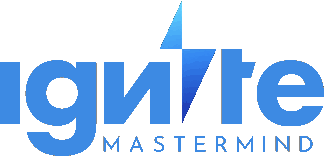As demonstrated by Yixian Qiu, LirandëPira, and Patrick Rebentrost of the National University of Singapore, the challenge of learning efficiently from data is greatly boosted by new research into quantum reinforcement methods. Their work addresses the underlying problems in machine learning: how to optimally train models when dealing with complex processes, and proposes a new approach called Quantum Tilted Empirical Risk Minimization (QTerm). This method offers a competitive alternative to existing methods for process learning, and could improve both the speed and accuracy of training. Researchers demonstrate the effectiveness of Qterm by establishing clear limitations on the amount of data needed to ensure successful learning, developing new benchmarks for generalization, and ultimately contributing to a deeper understanding of the feasibility and improvement of the learning process in both classical and quantum contexts.
Quantum learning adapts to adjusting loss functions
Quantum learning is the process of training algorithms on quantum data, presenting unique challenges to traditional machine learning approaches. Classical algorithms often wrestle the inherent complexity of quantum systems, such as superposition and entanglement, and require new methods. An important aspect of successful quantum learning is to measure the difference between model prediction and desired outcomes and define the appropriate loss function that guides the learning process. Designing these loss functions for quantum data is difficult due to the complex structure of quantum information and the stochastic nature of measurement. This work introduces a framework for quantum learning using tunable loss functions, allowing algorithms to dynamically adjust the loss functions during learning, allowing better responses to quantum data and specific properties of learning tasks, effectively balancing accuracy, robustness and generalization. This flexibility is important for achieving optimal performance in applications such as quantum state discrimination, process identification, and quantum control.
This study modifies existing theoretical learning frameworks to incorporate tunable loss functions. This intersection requires new ways to measure complexity, including those related to the amount of quantum data required for training and how well the training model is generalized. Minimizing empirical risk acts as a starting point, and by recognizing the diversity of learning problems, advanced strategies such as sloping empirical risk minimization have been developed. This study proposes a definition of slope empirical risk minimization suitable for learning quantum processes, resulting in a new approach called quantum slope empirical risk minimization.
Quantum machine learning research environment
The field of quantum machine learning is expanding rapidly, and is largely drawn from statistical learning theory. Current research includes a wide range of algorithms and techniques, including variational quantum circuits, quantum support vector machines, quantum neural networks, quantum principal component analysis, and quantum Hamiltonian learning. The key focus lies in understanding and improving generalization, and the ability of models to work well with invisible data. This is a major challenge due to limited data and complex parameter space. To address this challenge, researchers are actively investigating techniques in classical statistical learning theory, such as PAC learning, VC dimensions, red marcher complexity, and margin boundaries. Optimization and gradient estimation are also important areas of investigation, focusing on parameter shift rules and adapting backpropagation to quantum circuits. The robustness to noise and hostile attacks, as well as effective methods for encoding classical data into quantum states, have also attracted considerable attention.
Recent research highlights the potential trends in empirical risk minimization when applied to quantum systems. The adaptation of Esscher Transforms, originally used in finance, is also noteworthy in quantum machine learning for learning probability distributions. Several studies highlight the importance of margins in achieving good generalized performance, suggesting that techniques for maximizing classifier margins may be particularly effective in the quantum domain. Normalization of spectral norms, a way to control model complexity and improve generalization, also gains traction.
Researchers are investigating the combination of regularization techniques with quantum least squares algorithms and utilizing PAC Bayesian methods to analyze generalization. Reducing the amount of data required for learning is a key issue, with data focusing on data compression and quantum data analysis. Using Gibbs states to learn Hamiltonians and develop quantum backpropagation techniques is also an active field of research.
This research environment demonstrates a strong connection between classical and quantum learning, and many of the fundamental principles of classical learning are still applied to quantum machine learning. Generalization remains the biggest challenge, and normalization techniques are important to prevent overfitting and improving performance. Effective data encoding is essential to harnessing the power of quantum computing for machine learning. This field is evolving rapidly, and a combination of classic and quantum technology may be required to achieve great advancements.
Qterm improves the boundaries between generalization and complexity
This work introduces a sophisticated framework for sloping empirical risk minimization (TERM) called QTERM, which is specifically designed for the learning process. Researchers demonstrate that Qter offers a viable alternative to both implicit and explicit normalization strategies commonly used in process learning. Important contributions include deriving upper bounds of Qterm sample complexity, establishing new generalized boundaries for classical terms, and providing an agnostic learning assurance of hypothesis selection. These results provide ways to promote understanding of complexity boundaries that manage the feasibility of learning processes and improve generalization performance.
This study rigorously establishes the theoretical foundation of Qterm based on existing empirical risk minimization techniques. The authors demonstrate the benefits of their approach, but acknowledge that certain implementations of “slope mechanisms” may require adaptation depending on the quantum learning settings and application. Future research orientations include extending these slope measurements to quantum systems, particularly in the context of Hamiltonian learning, to further explore the nuances that define slopes in different quantum learning scenarios.





